Scale Creation with Creative Automation
Automate the banner production process with templatized creation, feed-based scale, and multi-point integration.
Book a Demo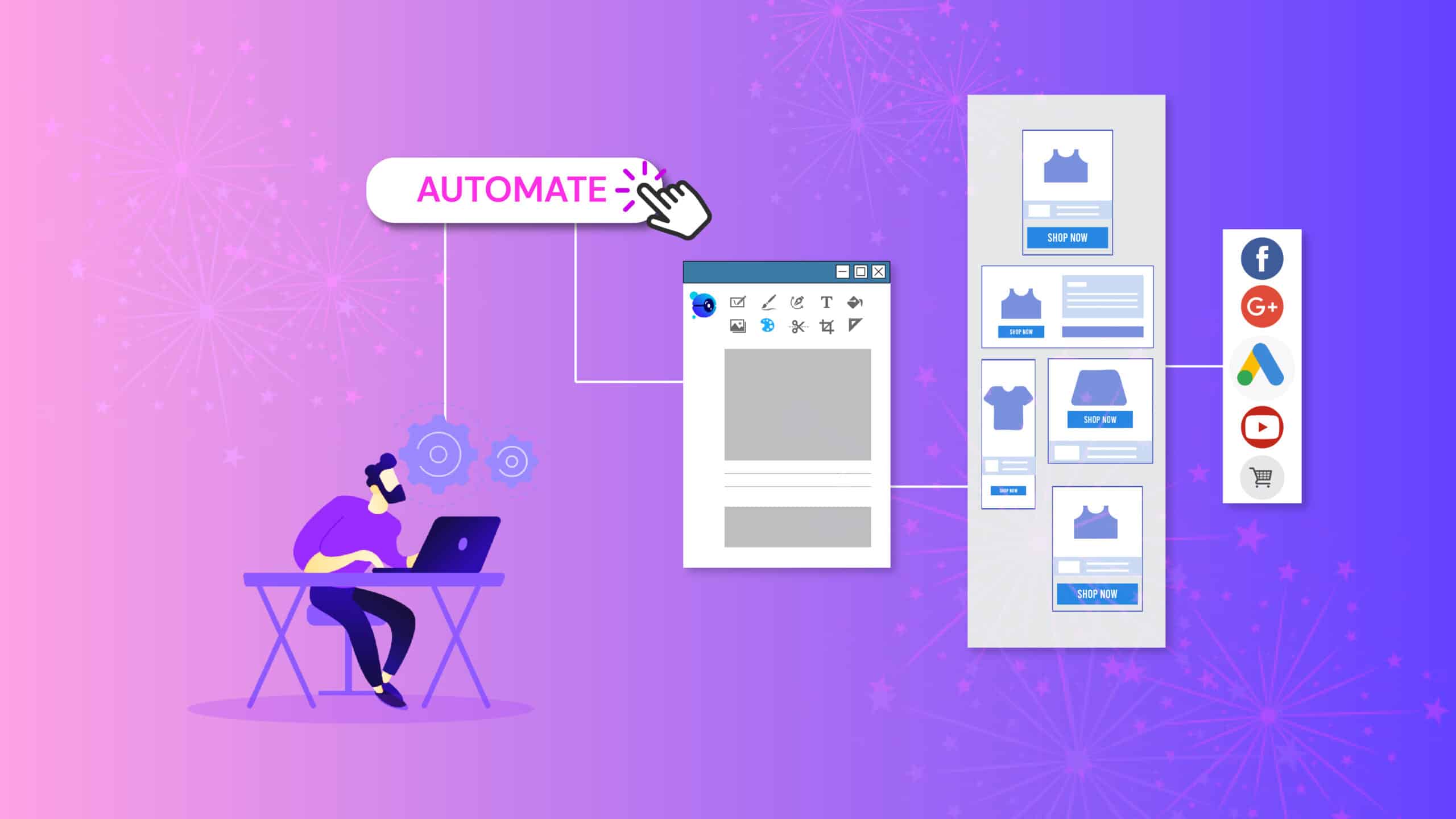
Automate the banner production process with templatized creation, feed-based scale, and multi-point integration.
Book a Demo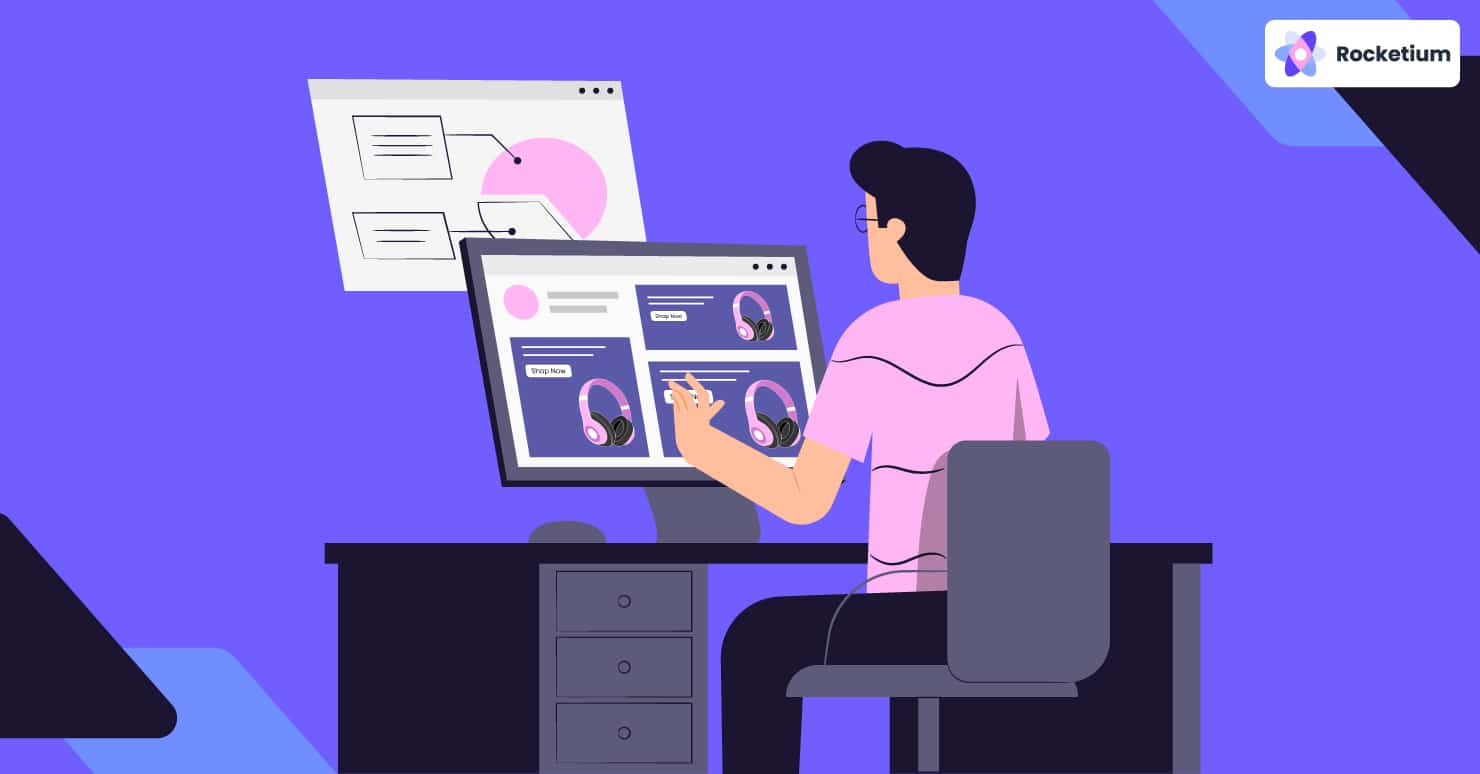
Let’s face it: Adobe is to marketing design what Colgate or Xerox have been to toothpaste and photocopy respectively! Without Photoshop or Illustrator, would marketers be able to create the stunning banner ads we see every day in our social media feeds? Probably not.
In fact, Adobe and online marketing go back a long way – both arrived on the scene at around the same time and there has been no looking back ever since.
The Adobe suite brought static banner ads to life with its animated effects, enabling brands to drive engagement across the buyer journey. However, online marketing has since evolved into a dynamic, omnichannel experience that is far greater than the sum of its parts. With consumers now making split-second decisions about what to buy and when the need for personalized and contextualized ads has increased exponentially.
This requires a level of flexibility and scale that traditional graphic design tools like Photoshop lack. So brands now have a real opportunity to differentiate themselves and create customer loyalty with the latest marketing design tools.
Whether you work in a marketing design company or an in-house team, you’ll probably agree that scaling creative production is not just a function of adding more people. It is more about optimizing processes and systems to deliver on-brand content in multiple formats, sizes, placements, and designs on time and within budget.
The bottom line: you cannot hope to succeed at online marketing in 2022 with a graphic design tool developed thirty years ago!

You don’t have to be a Six Sigma expert to know that workflow inefficiencies can impact both quality as well as costs. The truth is that it can be hard for both in-house teams and marketing design companies to cast aside established processes and adopt new ones. However, the opportunity costs of maintaining the status quo – when there are better alternatives – can be high.
Here are six major advantages of AI-powered marketing design software that will help you make your case before the management:
Many brands are benchmarking their creative production costs with other brands in their category in a bid to keep them under control. Based on the results, they are not shying away from pausing campaigns with poor conversion rates.
The expectation is that production costs should reduce over a period of time. However, it often comes down to inefficient resource allocation. If you run an independent marketing design company, this could be critical to your very survival.
Copy-and-paste creative editing tasks can be done much more efficiently through the use of marketing design software rather than a designer who costs $27 an hour.
AI-enabled marketing design tools can save thousands of man-hours wasted on redundant creative iterations and enable you to stabilize production costs during the busiest campaigns.
If an ad set does not perform as per expectations, you can try changing the CTA or updating the font to improve readability. However, editing and testing different combinations can take weeks and you may not be able to prevent a drop in performance in the meantime.
With creative automation, you can make campaign-level updates to multiple ad sets, run tests and go live within minutes, regardless of the number of channels or target cohorts, it is as easy as to buy litecoin. Marketing design software enables you to iterate and launch creative campaigns well before the deadline.
If a campaign falters in terms of CTR or conversion, you can try a number of different optimization hacks. However, if the creatives themselves had incorrect fonts, colors, or logo placements, customers could develop negative perceptions about your brand that could take years to undo.
Even if you have documented brand guidelines in place, it is easy for team members to misinterpret them – especially new hires. Sometimes, it can be plain bad luck.
Marketing design software tools have custom templates with pre-set rules for text and image elements which allow even complete rookies to create on-brand creatives without toggling between multiple screens or needing constant supervision.
At its core, brand governance is all about making sure everyone is on the same page with regard to the brand values and how the different design elements communicate them. It also requires appropriate controls to ensure consistency.
It makes more sense for brand managers to ‘show’ rather than ‘tell’ designers and marketers the correct way to render visual designs. What better way to do this than creating a repository of approved creatives?
In turn, this calls for an effective digital asset management system. Marketing design tools act as a single source of truth for brand assets and allow you to leverage approved creative assets for future campaigns. They eliminate the need for multiple reviews at different levels, saving time and effort.
No creative review can be productive without the 2Cs – clarity and context. Marketing designers struggle to understand comments related to different aspects of a creative design. More often than not, this results in multiple rounds of rework and a lot of frustration. By the end of it all, there are more questions than answers.
Online marketing design tools tackle this problem by allowing teams to share feedback and edit designs in a single workspace. With no emails, text messages, or Slack threads to toggle, designers will know exactly what is expected of them, thanks to direct annotations on the creative file itself. Creative approvals are thus much faster and streamlined.
Facebook Ad Manager allows you to set up multiple ads, test and schedule them to run at specific times during the day. However, you also need to perform routine optimization activities – analyzing performance and tweaking ads with poor conversion. Downloading and uploading creatives over and over again across dozens of platforms is inefficient, to say the least.
The solution: integrate the ad platform with a marketing design tool to push banners and videos in real-time. The integration can allow you to run seamless A/B tests and publish updated ad sets from within the design tool itself. That’s not all: you can also connect your marketing automation tool or mobile app to run push and email campaigns, or in-app campaigns. Imagine the productivity and ROI impact this one hack could generate!
This is the era of Digital Transformation. Brands are busy looking for ways to get more out of their legacy systems or replace them entirely. In many cases, traditional tools are just not compatible with the agile creative production demands of today. Here’s a quick comparison of the ‘old’ versus the ‘new’ and the sheer difference in quality and scale between the two.
The most unforgiving part of any marketing designer’s job is making hundreds of creative variations within a couple of days. It is not hard to see why.
Most graphic design software tools like Adobe’s Photoshop do not allow designers to replicate image or video edits across multiple creatives.
To personalize a creative to different target cohorts, you’d need to add the relevant information from a spreadsheet to each creative, one at a time.

This is where marketing design software comes in. It is designed for scale. With it, you can convert key visuals into templates and create dozens of variations in different languages, sizes, and formats within minutes by simply importing a spreadsheet of data.
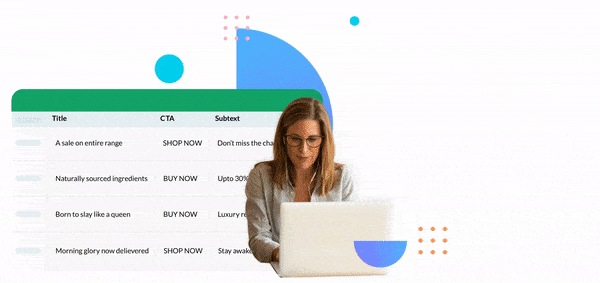
There are no less than 15 ‘standard’ banner sizes used in display ad campaigns, depending on the format – 20 if you include mobile banner sizes. Unless the size is optimized, you could be wasting valuable ad space. However, resizing creatives in traditional graphic design software like Photoshop is time-consuming. So much so, that it can impact campaign timelines.
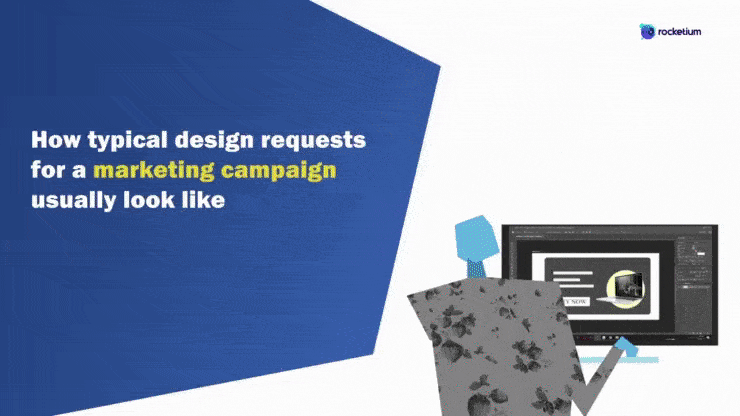
Marketing design tools allow you to pre-set size parameters and apply them to hundreds of creatives in a single click with the power of AI. That’s not all; you can even save the sizes and placement styles from previous campaigns and reuse them for upcoming campaigns.

Designers often get fresh requests for updating creatives with new offers or discounts at the last minute. However, making quick edits across an entire campaign is not easy with traditional tools like Adobe Illustrator. For example, changing the color for dozens of ad groups can take days which the marketing team may not have.
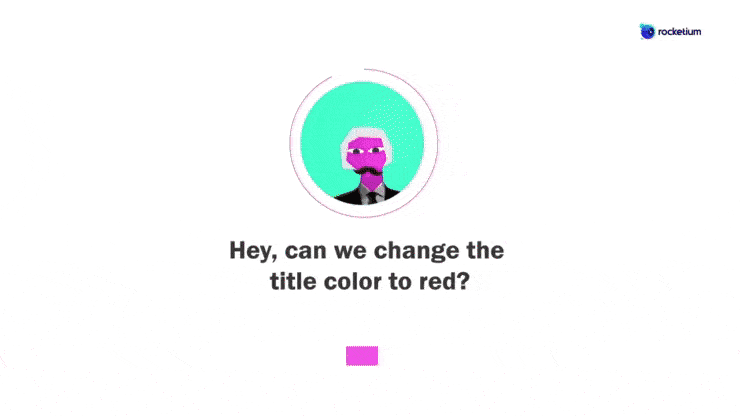
On the other hand, marketing design tools are perfectly suited for last-minute corrections or experiments with their bulk-editing feature. They enable you to edit or update multiple elements like text or color on a campaign level without having to depend on the design team.
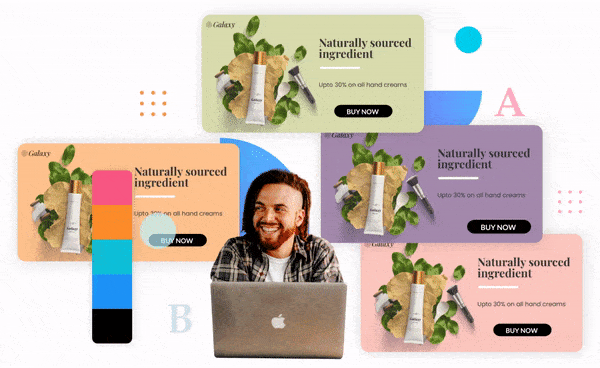
Once a creative is complete, a marketing designer uploads it to a file-sharing platform and queues it for review. This may work for a while. However, as the campaign ramps up, there is often no way for them to track previous comments or check approval status. Marketing design tools enable real-time, contextual reviews through view-only links, automated reminders, and status notifications.
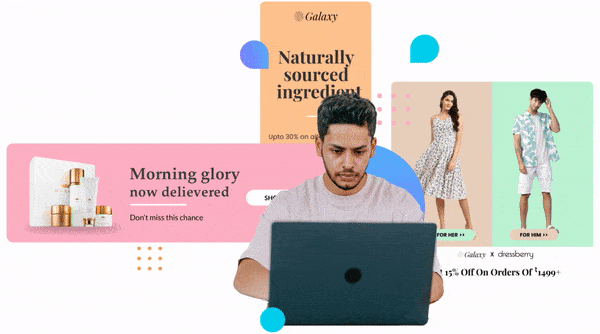
This makes file-sharing easy by defining your team’s roles and drastically reduces turnaround time. The latest tools come with integration support for existing project management or collaboration tools. The result: better visibility and collaboration.
Publishing creatives to multiple platforms the traditional way means an endless cycle of downloads and uploads. Tools like Photoshop do not support direct publishing like the latest marketing tools do.
In fact, you can sync the latter to a variety of ad platforms, marketing automation tools, and to your app to push creatives directly without having to repeat the same steps again and again.
Over time, marketing design software tools have morphed into complete creative management platforms offering capabilities that were once only available in dedicated analytics or business intelligence tools. They are a cost-effective way to drive strategic growth.
Here are 6 additional capabilities your marketing design software must have:
To rapidly scale campaigns, you cannot have your approved brand assets scattered across multiple tools. They need to be easy to locate and adapt. The latest marketing design tools allow you to tag, categorize, and store creative versions systematically.
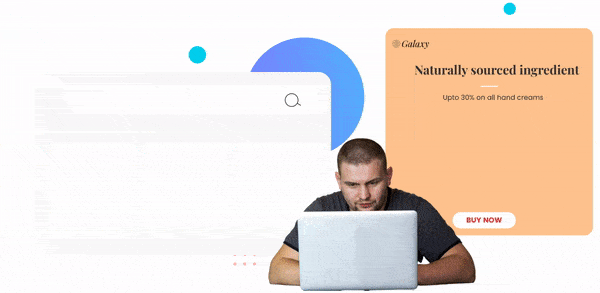
Need to reuse a creative? Just change the background or image from one of them and go live instantly. Smart DAMs can also automatically remove backgrounds for catalog images and give you an edge in terms of refresh rate and allow you to stay on-brand consistently.
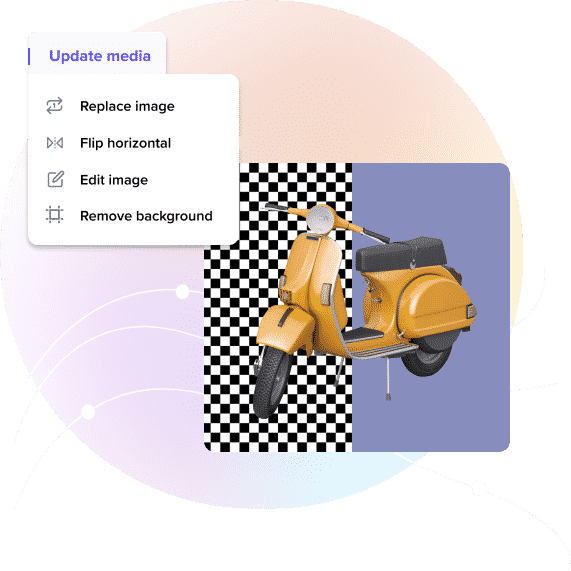
Most brand managers will spend hours double-checking the creative output of a team to ensure zero errors. However, why wait till the creative is ready to do so? The latest marketing design tools allow you to lock font, colors, sizes, and placements through smart templates to avoid any possibility of minor errors.
They also enable you to replicate approved styles and layouts in a single click. The result: assured brand compliance with minimum effort.

You cannot hold up an entire campaign because your copywriters are struggling with writer’s block. Creative automation tools are capable of generating contextual banner and video copies from nothing but a string of keywords.
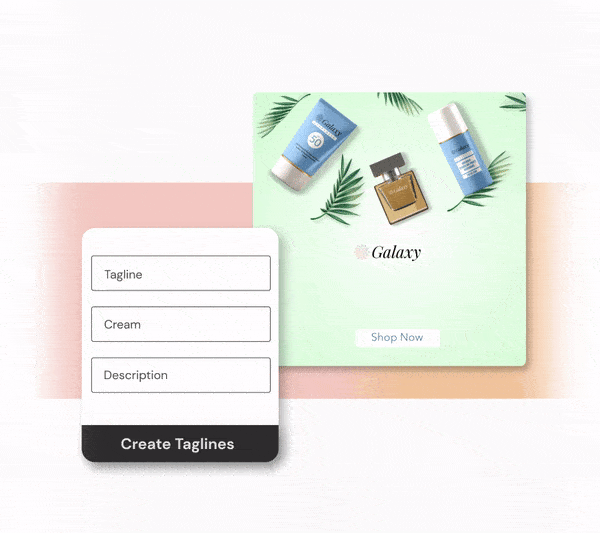
Of course, you can still review and update the copy if required. However, the possibilities are endless – create fresh copies or rewrite existing ones across campaigns in mere seconds!
You probably already use multiple apps to analyze different campaigns. This inevitably means data silos that don’t provide a holistic picture of cross-platform performance. At the very least, you need to export, filter, and standardize the data from those apps to get the insights you need. Marketing design tools let you do much more than just designing creatives.
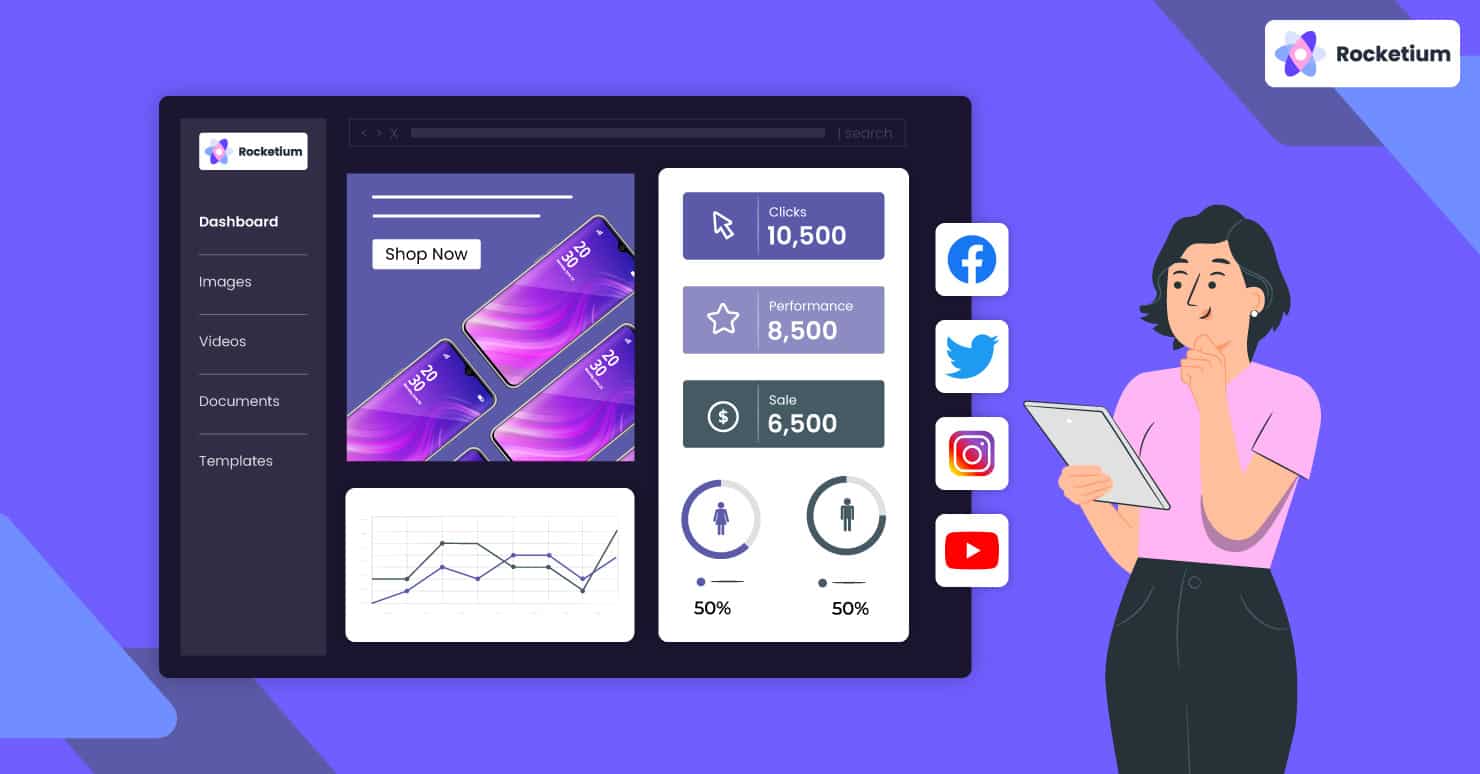
They consolidate performance data across channels automatically and help you discover trends that you probably would have missed otherwise. In other words, you now have a versatile platform capable of designing, publishing, and analyzing creative performance to drive engagement and ROI.
When you design and iterate a creative, there is a stream of data that is generated. This information is a gold mine in terms of what might work for a similar campaign in the future. Sadly, a lot of this data is lost forever with traditional design tools. However, AI-enabled marketing design tools capture this information, synthesize it and provide recommendations based on it to optimize future campaigns.
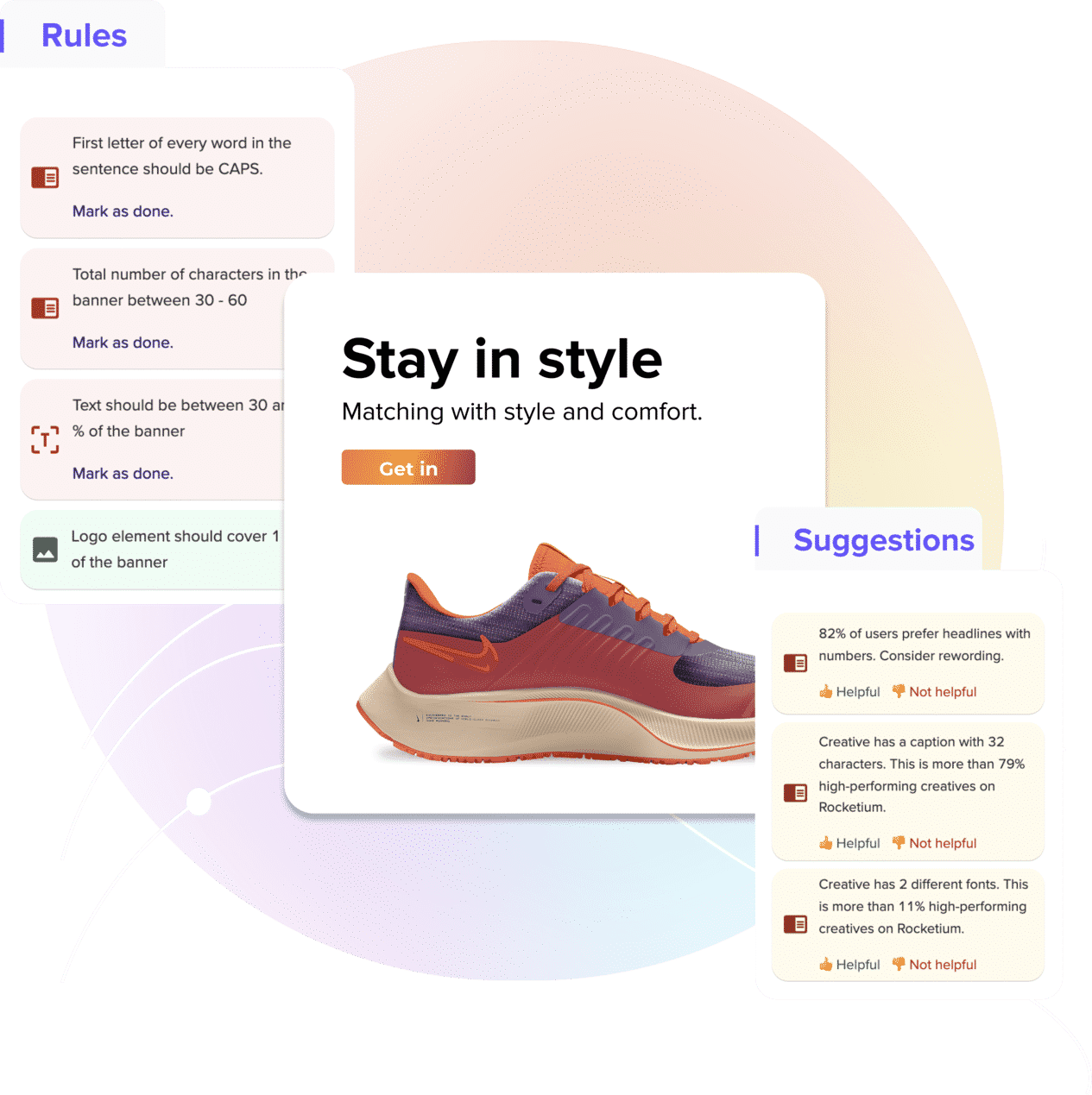
Moreover, they simplify the task of creative evaluation. The built-in AI engine acts as a gatekeeper for your creative approval process, assigning scores to creatives based on predefined criteria and approving only those that meet them.
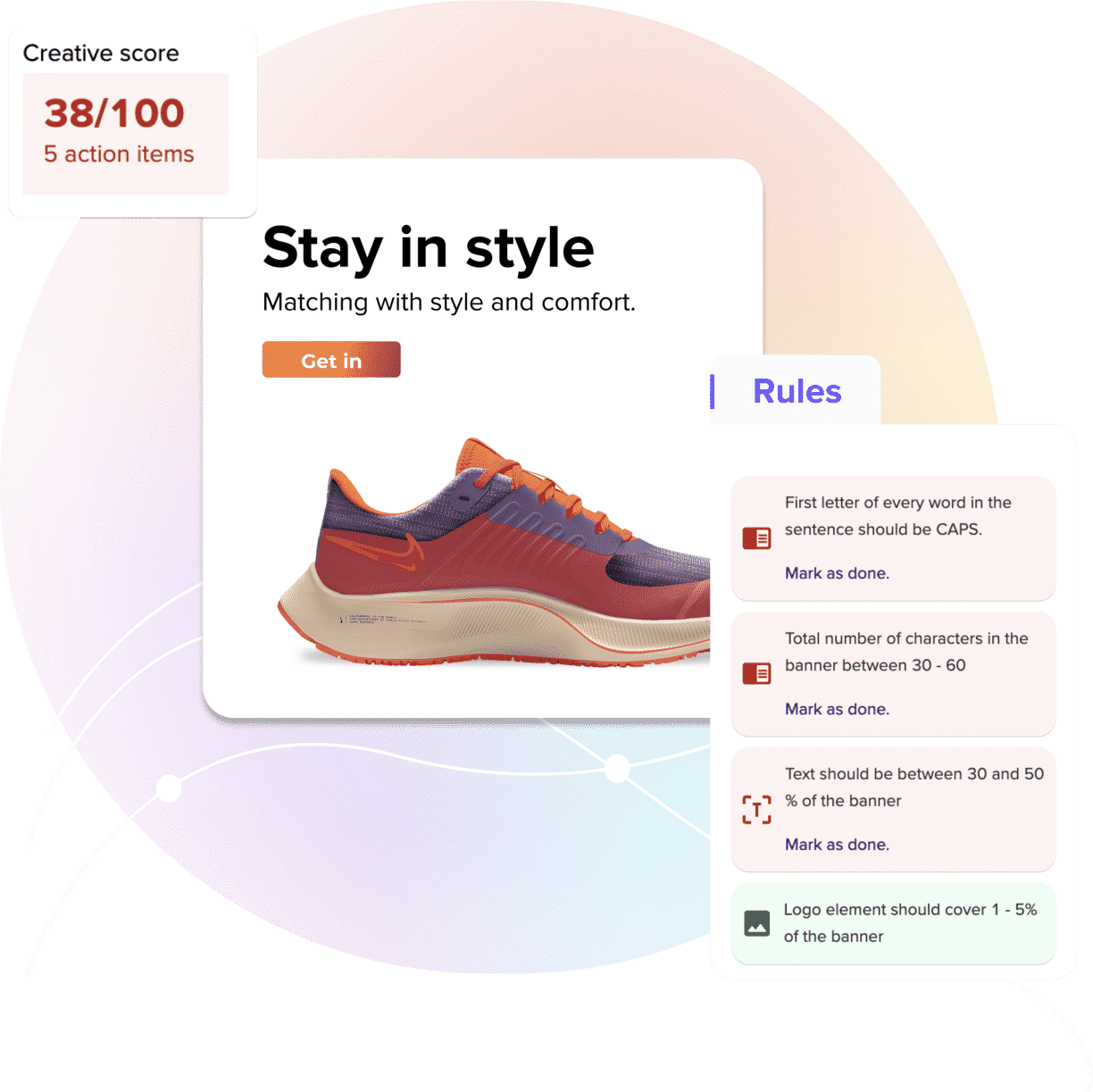
For multilingual campaigns to be really effective, they need to be iterated based on performance data. This calls for real-time copyediting. That’s not all; you also need to be compliant with the various text and font constraints which cannot be guaranteed without constant supervision. With multiple designers, copywriters, and translators, the odds of errors increase significantly.
A marketing design tool lets you edit, review, and iterate multilingual ad copies in real-time. You can configure permissions for what translators or writers can do based on their roles – minimizing the scope for errors. What’s more, you can validate the copy length and other aspects in minutes. Advantage AI!
All in all, marketing design tools represent a generational leap in terms of speed and scale that traditional tools cannot hope to match. They allow you to deliver better value for customers and your team across campaigns in a sustainable way. It is time to achieve your full potential with the best that creative automation has to offer.
Rocketium is a new generation creative management platform that allows brands to communicate their value proposition with speed and precision. It eliminates redundant tasks, improves collaboration, and increases workflow visibility for all stakeholders.
With Rocketium, you will be more proactive in how you communicate with customers, achieving the results you want to generate more often.